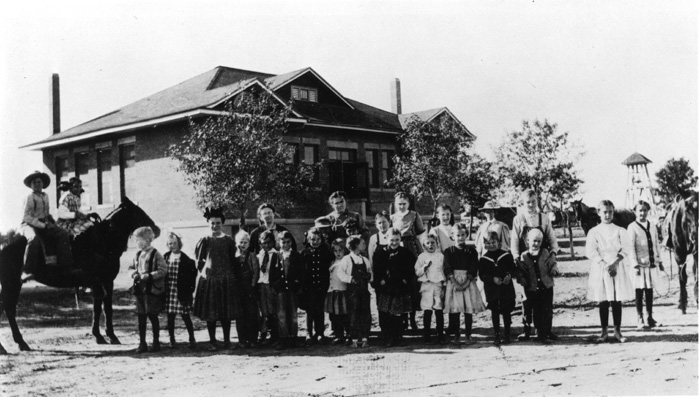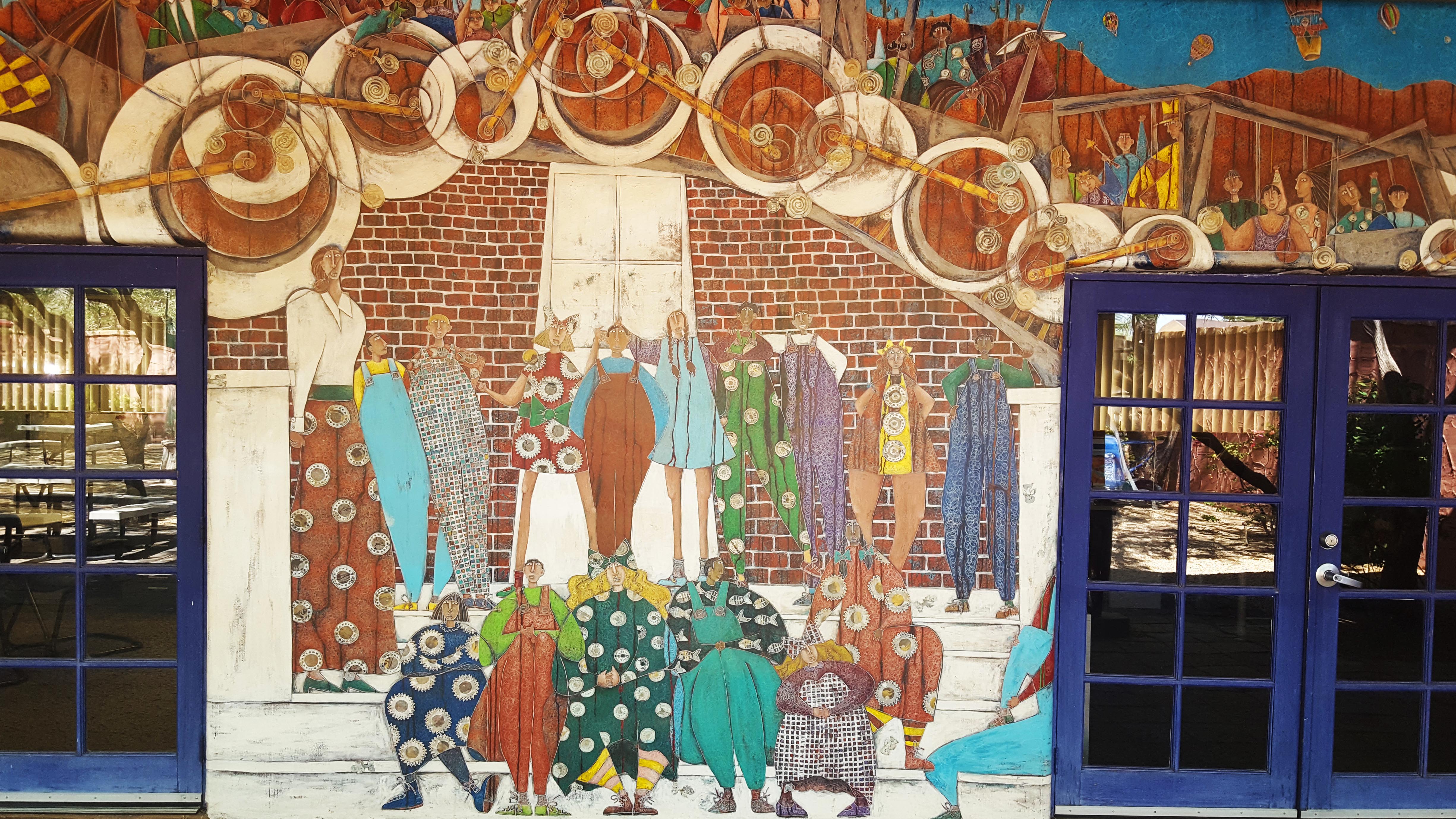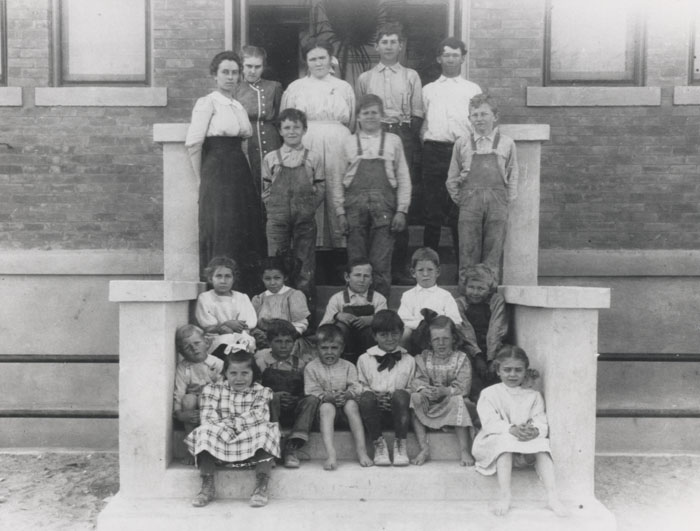|

In the year 1896 Chaplain Winfield Scott recognized the need for an
educational system in the community. For seven months Mrs. George
Blount, wife of the principal of the Phoenix School, had been teaching
eight children in her ranch home near the Scott Homestead.
On
August 3, 1896, a group met with Chaplain Scott to discuss the matter
of a school. The Chaplain, Mr. Frank Titus and John S. Tait were asked
to serve as a school committee. On August 20, 1896 they met at the Titus
ranch and organized the community into a school district. Scottsdale
was chosen as the name of the district, to honor Chaplain Scott. Three
lots were chosen southeast of what is now Brown Avenue and Main Street.
Some of the townspeople erected a 16x18 foot wooden building. The school
term opened with fourteen pupils, representing all eight grades. The
new teacher, Hattie Green, was paid $45.00 a month. The following August
another room was added, extending 12 feet to the north, to accommodate
the growing number of pupils. This building was used until 1909, when
the increased enrollment made it necessary to increase the size of the
building.
A bond election was held May 1909 and a $5,000.00
bond was passed to build a new building adjacent to the original school.
It was named Scottsdale Grammar School and now houses the Scottsdale
Historical Museum. It contained two large classrooms, an entrance hall,
and two small rooms for storage of supplies and books and was erected
over a full sized basement.
While the building was being used
as a school it was also the center of the social life of the community.
It was used for a Sunday school and church, a polling place including
the election that decided for a new Scottsdale High School, a Farm
Improvement Society, and Red Cross bandage rolling. After the building
of Scottsdale High School and a new Scottsdale Elementary School, the
brick schoolhouse was renamed the Coronado School and was used as a
school for Mexican-American pupils.
The newly incorporated
town became owner of the parcel and used part of the building as city
offices and rented out part to the county. Thus the "Old Brick
Schoolhouse" became the Town Hall and the County Court Office. When the
city offices outgrew the building it became the city library.
In 1968 the city was going to tear the building down as part of the
Scottsdale Mall development. The Scottsdale Historical Society was
formed in 1969 to save the building. They had many fundraising projects
to raise money to restore the building. They were not able to raise
enough money for restoration.
The Chamber of Commerce then
offered to help raise the money needed if they could use the building
for their offices until such time as they could get a place of their
own. In 1972 the Chamber of commerce signed a lease agreement with the
city and moved in.
For a number of years the Historical
Society held their meetings in the basement and had a small display area
on the main floor.
In 1991 the Chamber of Commerce moved to a
nearby building on the Scottsdale Civic Mall. In July, 1991, the
Scottsdale Historical Society opened the Historical Museum with displays
of old photographs, a classroom as it would have been in 1910, and
other displays depicting life in Scottsdale and the southwest.
Community Design Studio Mural
The Community Design Studio, a building owned by the city of Scottsdale, displays a segment of a mural entitled, "A Celebration of Diversity: the lines that connect", by Sam Mindrum-Logan. It is believed to be inspired by an early photograph of the Little Red Schoolhouse, depicting the class of 1910.
|
|

 Mural at the Community Design Studio - artist, Sam Mindrum-Logan
Mural at the Community Design Studio - artist, Sam Mindrum-Logan 1910 Class in front of the Little Red Schoolhouse
1910 Class in front of the Little Red Schoolhouse